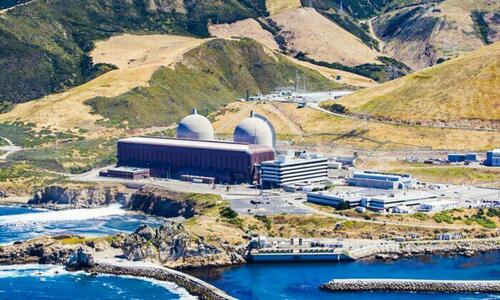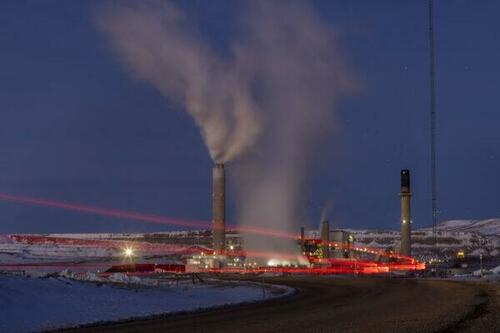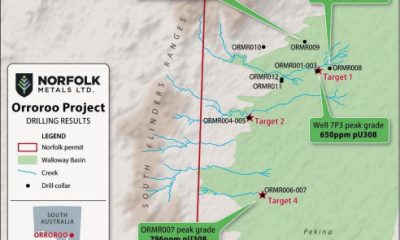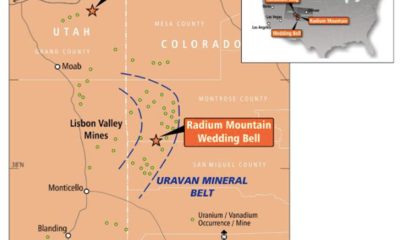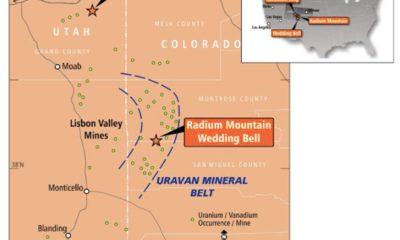Energy & Critical Metals
Bringing Dead US Uranium Enrichment Industry Back To Life Will Be ‘A Heavy Lift’ But Needed: Industry Leader
Bringing Dead US Uranium Enrichment Industry Back To Life Will Be ‘A Heavy Lift’ But Needed: Industry Leader
Authored by Jon Haughey via The…

Bringing Dead US Uranium Enrichment Industry Back To Life Will Be ‘A Heavy Lift’ But Needed: Industry Leader
Authored by Jon Haughey via The Epoch Times (emphasis ours),
Uranium mining in the United States hasn’t been profitable since the Russians flooded the global market with predatorily priced ore and processed fuel a decade ago.
Long before, the nation’s atrophied uranium enrichment industry, episodically idled by market paralyses and perpetually frozen in costly multi-jurisdictional regulatory entanglements, had ossified into obsolesce.
In 1980, the United States produced and processed 90 percent of the uranium used by 251 nuclear power plants that generated 11 percent of the country’s electricity.
In 2021, only 5 percent of the uranium used by the 55 nuclear power plants operating in the United States—which now generate 20 percent of the nation’s electricity—was produced domestically.
After years of Russian market manipulation stymied profitable domestic production, Congress has responded since 2020 with a series of bills that could, if approved, collectively spend up to $5 billion by 2035 in an attempt to seed a domestic commercial uranium market back to life.
Despite slow-rolling allocations and delays in launching programs, which some attribute to resistance within the Biden administration to nuclear power, mines across five states—mostly in Texas and Wyoming currently permitted to excavate uranium—will soon begin doing so.
Others elsewhere are also expected to participate in the U.S. Department of Energy (DOE) uranium consortium and subsidized market incubator.
Texas has the most uranium mining operations, but Wyoming has the most uranium, Wyoming Mining Association Executive (WMA) Director Travis Deti said.
“For all purposes,” he declared, “the state of Wyoming is the American uranium industry.”
There are four permitted uranium mines in the Cowboy State and at least three other prospective operations in regulatory review, Deti told The Epoch Times.
They’re ready to start digging this spring. “We can mine all the uranium we need in the U.S. right here in Wyoming,” he said.
US Enrichment Capacity: One Mine
But unfortunately, there’s nowhere in the United States for Wyoming mines to send ore for enrichment. Nationwide, only one plant in New Mexico has the capacity to enrich uranium for use in commercial nuclear reactors.
“Even if we were mining it now, we’re shipping it somewhere else [overseas] to get it enriched and refined,” Deti said. “When it comes to conversion and enrichment, we have no capacity to do that” in the United States.
Deti told The Epoch Times he has a solution for private industry: build enrichment plants in Wyoming near the mines, where there is a knowledgeable workforce and “friendly” state regulatory policies geared to spearhead the mine-to-market uranium recovery.
Deti also offers a solution for the Biden administration: to decarbonize energy and ensure a secure domestic energy supply, stop “paying lip service” to nuclear power as pivotal and de-zombify the nation’s uranium production industry by accelerating and streamlining permitting for ore excavation and processing.
“Right now, Russia has a hold on conversion,” or processing uranium for commercial use, he said. Russia produces more than 50 percent of fuel used for nuclear power across the world and nearly a quarter used in the United States.
“Getting everybody to recognize the problem” is a significant achievement, Deti said. But he’s concerned addressing the supply-chain gap won’t get the funding and regulatory relief it needs from the Biden administration, despite mounting bipartisan Congressional support for accelerating long-term remedies.
“I’m skeptical but hopeful,” he said. “We’re starting to turn in the right direction. It is possible that we can do it, but it is a heavy lift.”
Read more here…
Tyler Durden
Thu, 04/20/2023 – 20:20
uranium

Uranium Exploration Company Announces Additional Staking in the Athabasca Basin
Source: Streetwise Reports 12/22/2023
Skyharbour Resources Ltd. announced an update from its Canada-based Falcon Project along with additional…
Tesla Launches New Mega Factory Project In Shanghai, Designed To Manufacture 10,000 Megapacks Per Year
Tesla Launches New Mega Factory Project In Shanghai, Designed To Manufacture 10,000 Megapacks Per Year
Tesla has launched a new mega factory…
Giving thanks and taking stock after “a remarkable year”
An end-of-year thank you to our readers, industry colleagues and advertisers before Electric Autonomy breaks from publishing until Jan. 2
The post Giving…
